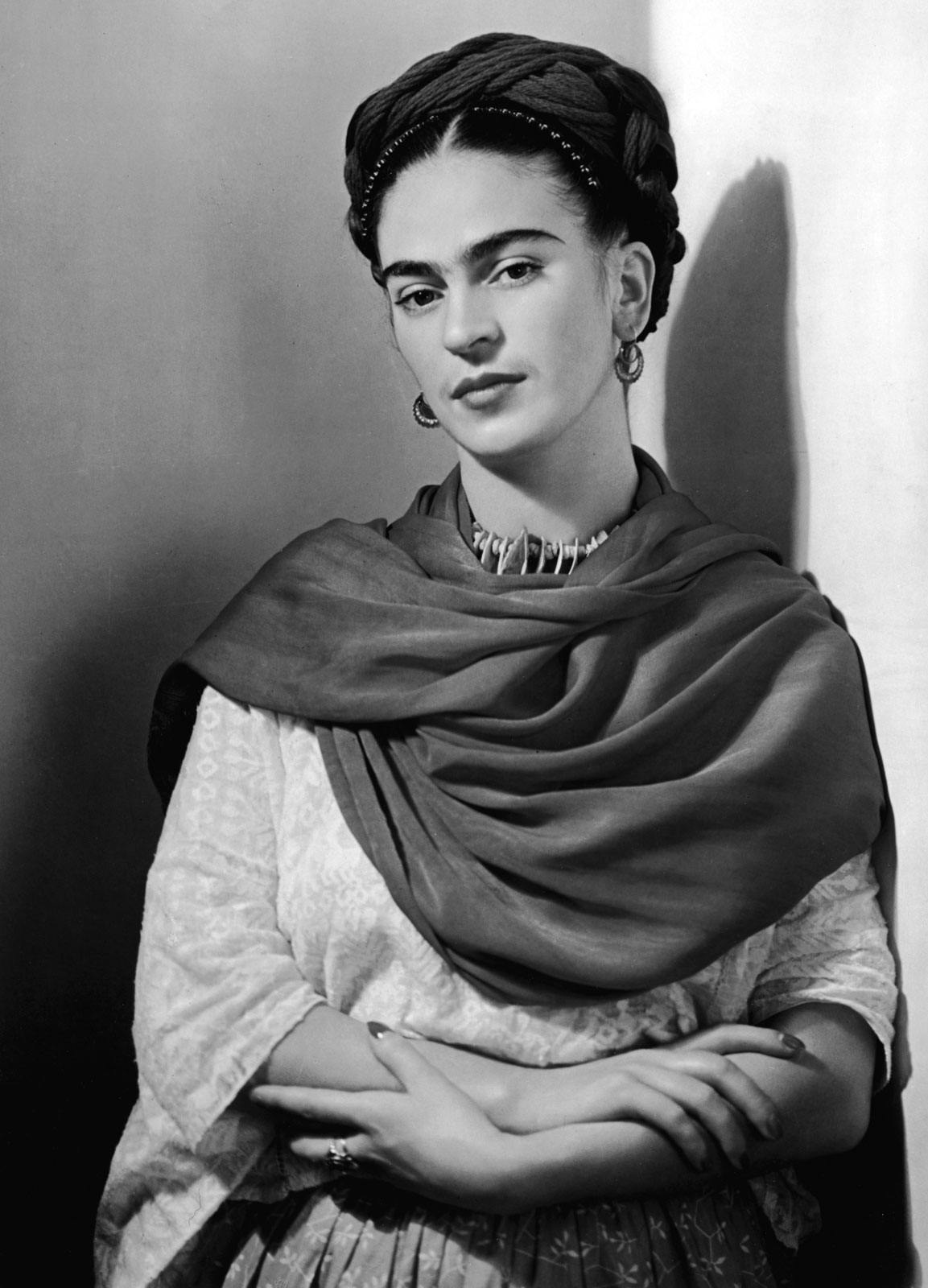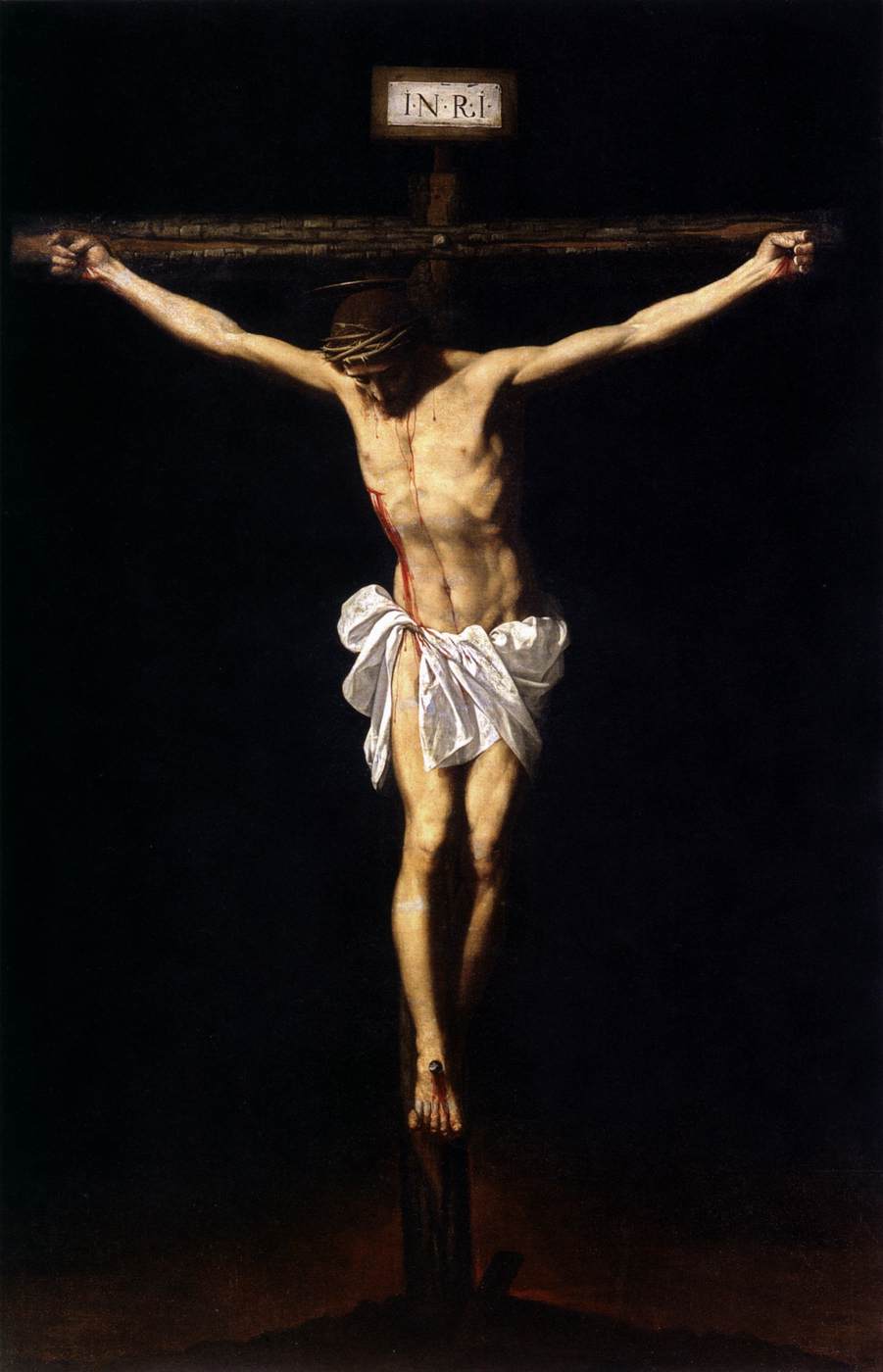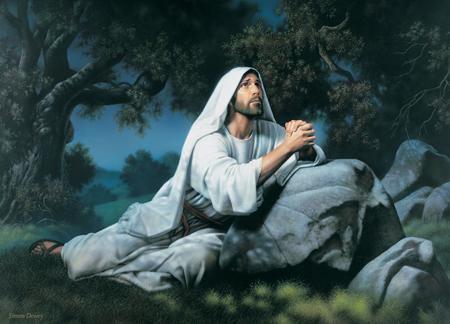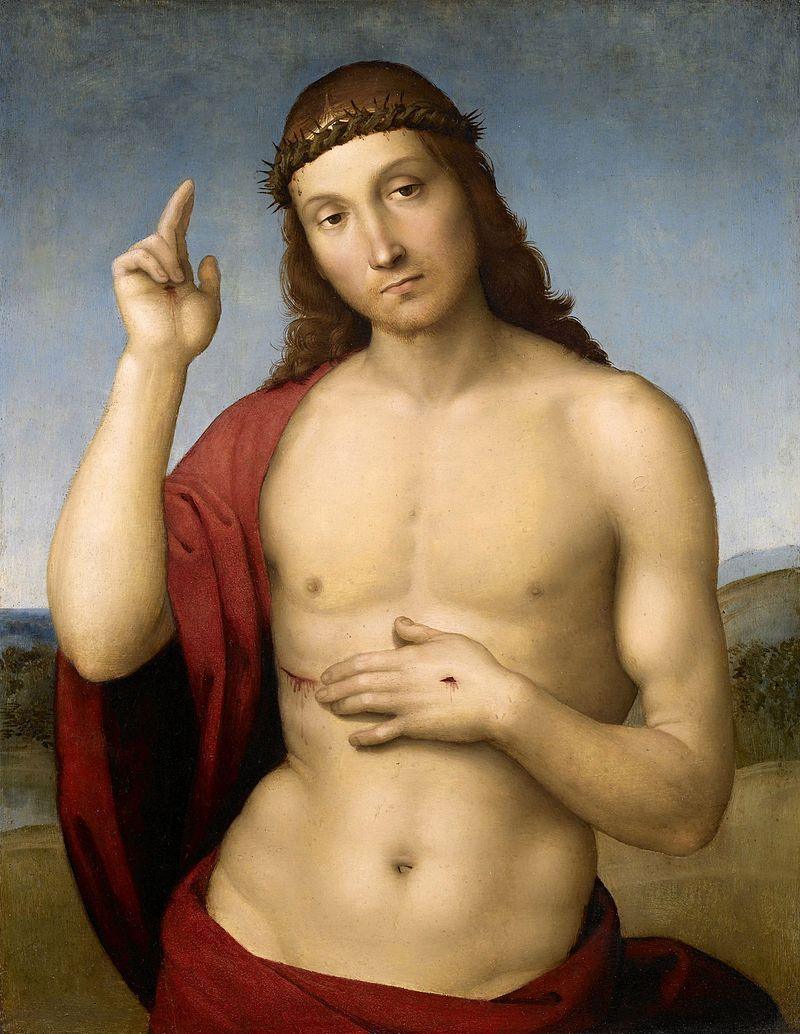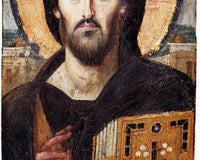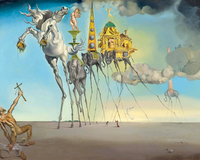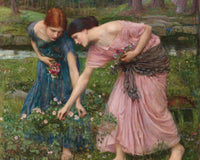Frida Kahlo

Frida Kahlo, fully Frida Kahlo de Rivera, but whose original name was Magdalena Carmen Frieda Kahlo y Calderón, was born on July 6, 1907, in Coyoacán, Mexico; and died on July 13, 1954, in her hometown. The artist Frida Kahlo was considered one of the greatest artists of Mexico. A painter remembered for her self-portraits, which contained pain and passion, bold colors, and her vibrant paintings that addressed themes such as identity, the human body, and death. Although she firmly denied it, she is often identified as a surrealist. Kahlo became politically active and married the communist artist Diego Rivera in 1929 (married in 1929, divorced in 1939, remarried in 1940).

Kahlo was the daughter of a German father of Hungarian descent and a Mexican mother of Spanish and Native American descent. Kahlo's father, Wilhelm (also called Guillermo), was a German who had emigrated to Mexico, where he met and married her mother Matilde. She had two older sisters, Matilde and Adriana, and her younger sister, Cristina, was born a year after Kahlo.
Later, during her artistic career, Kahlo proudly called her ancestry binary opposites: the European colonial side and the Mexican indigenous side.
Around the age of six, Kahlo contracted polio, which caused her to be bedridden for nine months. In her recovery, she limped when walking because the disease had damaged her right leg and foot.
Her father was somewhat ahead of his time and encouraged her to play soccer, swim, and even fight, activities not very popular for a girl at that time, to help her recover, but she would be left with a chronic illness that she suffered throughout her life. Kahlo was very close to her father, who was a professional photographer, and she often helped him in his studio, a place where she acquired a good eye for detail. Although Frida took some drawing classes, her real interest was science, and in 1922, she enrolled in the renowned National Preparatory School. She was one of the few students who attended the school and became known for her jovial spirit and her love for colorful and traditional clothing and jewelry, in addition to getting involved with a group of politically and intellectually like-minded students. Increasingly politically active, Frida Kahlo joined the League of Young Communists and the Mexican Communist Party.
While there, she met Rivera, who was working on a mural for the school auditorium.
On September 17, 1925, Frida and Alejandro Gómez Arias, an old school friend with whom she had a love story, were traveling together on a bus when the vehicle collided with a streetcar. As a result of the collision, Kahlo was pierced by a steel handrail, which entered her hip and exited her on the other side; she suffered several severe injuries, including fractures to her spine and pelvis. Due to this spectacular accident, Frida had to be operated on in an operating room more than 30 times during her life.
After staying at the Red Cross Hospital in Mexico City for several weeks, Kahlo returned home to recover further. To make her recovery more bearable, Frida learned to paint on her own, and she also read more frequently as she studied the ancient art of the great masters.

She began to paint and her first self-portrait was Self-Portrait with a Velvet Dress (1926), Frida painted a beautiful portrait of herself to the waist against a dark background with wavy, stylized waves. With an abstract style, and the soft modeling of her face, Frida shows her interest in realism. The stoic gaze so prevalent in her later art is already evident, and her excessively long neck and fingers reveal her interest in the mannerist painter Il Bronzino. When she finished her first self-portrait, she gave it to Gómez Arias.
 After recovering, Frida joined the Mexican Communist Party (PCM), where she reunited with Rivera. She showed him some of her works and he encouraged her to keep painting.
After recovering, Frida joined the Mexican Communist Party (PCM), where she reunited with Rivera. She showed him some of her works and he encouraged her to keep painting.In 1929, Frida Kahlo married Diego Rivera. She had met him in 1922 at the National Preparatory School. Rivera had gone to paint a mural called The Creation, which was located in the institution's conference room.
According to some reports, she told a friend that one day she would have Rivera's baby.
Shortly after marrying Rivera, Frida made a monumental decision in her life, she changed her personal and pictorial style, this image would be what many would remember of this art heroine. She began to wear the traditional Tehuana dress that became her personal trademark. This attire consisted of a flower headdress, a loose blouse, gold jewelry, and a long skirt with ruffles.
Frida was painting works while traveling through the United States of America between 1930 and 1933 with Rivera, as Diego had received several mural commissions in different cities of the country. During this period, she had to face a couple of failed pregnancies. Some time after going through an unwanted abortion and the death of her mother, Frida painted some of her most extreme works. Kahlo entered Henry Ford Hospital, and while there, she painted a picture in which she portrayed herself naked and bleeding on a hospital bed in the midst of a barren landscape.

The painting Frida and Diego Rivera (1931) expresses two things; first her new outfit and second, but no less important, her taste for Mexican folk art. Frida exhibited this painting in San Francisco where she lived with her husband Rivera, at the Sixth Annual Exhibition of the Society of Women. In the painting, the couple is depicted, Kahlo gently holds her partner Diego's hand while he takes a palette and brushes with the other hand, a very stiff pose that according to many experts foreshadowed their problematic relationship.
The work now resides in the San Francisco Museum of Modern Art.

In 1933, Kahlo and Rivera lived in New York. Rivera had one of the most famous commissions of his life. Made by Nelson Rockefeller himself, it was to adorn a wall in the RCA building at Rockefeller Center. Rivera began the famous mural Man at the Crossroads. But there was a huge scandal when Rivera decided to incorporate the famous communist leader Vladimir Lenin into his mural; this act was immediately rejected by the Rockefeller family and the mural was ordered to be destroyed.
Months after this incident, the couple returned to Mexico and moved to San Ángel, Mexico.
In 1937, Frida painted one of her famous works, The Memory, the Heart. She wanted to show her great pain to the world, as she had been deceived; her husband Diego Rivera emotionally betrayed her with her younger sister Christina. In response to this family betrayal, Kahlo cut most of her characteristic long dark hair.

1937 was a year full of significant events for Frida. Although she and Diego were separated, they decided to help the Soviet leader Leon Trotsky and his wife Natalia, who had been exiled. The Trotskys came to live with them in the Blue House, Frida's childhood home.
Kahlo and Trotsky had a brief affair during this time.
Frida and Diego decided to divorce in 1939, but a year after resolving the issue, they got back together and then married. They decided to move to the Blue House.
There she decided to create another great work The Two Fridas. She is represented twice in the painting; one is the Frida who loved Diego, depicted in the traditional Tehuana dress of Mexico, the other Frida is dressed in European attire and is the woman whom Diego betrayed. Shortly after, she painted the Self-Portrait as Tehuana.

Later in 1943, Frida was appointed as a painting professor at the School of Fine Arts of the Ministry of Education, La Esmeralda. Due to her health problems, her body began to deteriorate more and more, which led her to resort to alcohol and drugs for relief. Nevertheless, she continued to be productive. She was able to paint several self-portraits characterized by her hairstyle, clothing, iconography, and her famous gaze. By the late 40s and early 50s, she had to undergo several surgical interventions, often with very long hospital stays.
In 1940, Frida participated in the international surrealism exhibition at the Mexican Art Gallery. There she was able to exhibit two of her greatest works: The Two Fridas and The Wounded Table. The known surrealist André Breton described Frida as a surrealist artist, a categorization that Frida rejected, explaining that she had only confined herself to painting her reality.
In 1941, Kahlo received a commission from the Mexican government, consisting of five portraits of very important Mexican women, but due to health and emotional problems after losing her father, she could not finish the commission. Despite these obstacles, her popularity continued to grow.
Towards the end of her life, she needed help to move around. She appears in Self-Portrait with Dr. Farill (1951) sitting in a wheelchair.

In 1953, Frida received the invitation for her first solo exhibition in Mexico. At that time, she was bedridden; she had been diagnosed with gangrene in her right foot that spread so much that the doctors ended up amputating part of her right leg. Despite all this, Kahlo did not miss her first exhibition; she decided to arrive by ambulance and spend the evening talking and celebrating with the guests from a four-poster bed placed in the gallery especially for her.
Due to a severe depression, Kahlo was hospitalized in a hospital in 1954; some people claim she was admitted due to a suicide attempt. Two months later, she returned to the hospital as she presented with bronchial pneumonia.
Regardless of her physical condition, Kahlo did not let that interfere with her political activism. Her last public appearance was a demonstration against the US-backed overthrow of Guatemalan President Jacobo Arbenz on July 2.
She died in the Blue House a year later, with the official cause documented as a pulmonary embolism.
After Kahlo's death, Rivera had the Blue House redesigned as a museum dedicated to her life. The Frida Kahlo Museum opened to the public in 1958, a year after Rivera's death.
In the museum, her personal belongings are displayed throughout the house, as if she still lived there. The installation is the most popular museum in the Coyoacán neighborhood and one of the most visited in Mexico City.
Widely known for her Marxist leanings, Frida has become a countercultural symbol of the 20th century and has created a legacy in the history of art that continues to inspire the imagination and mind.
After Kahlo's death, the feminist movement of the 1970s generated renewed interest in her life and work, as many considered her an icon of female creativity.
Kahlo's life became the subject of a 2002 film titled Frida, starring Salma Hayek as the artist and Alfred Molina as Rivera. Directed by Julie Taymor, the film was nominated for six Academy Awards and won for Best Makeup and Original Score.
KUADROS ©, a famous painting on your wall.

